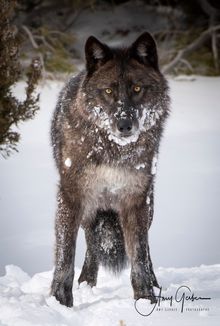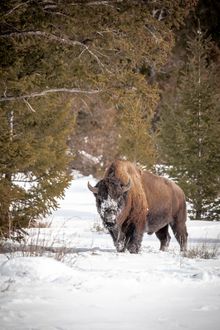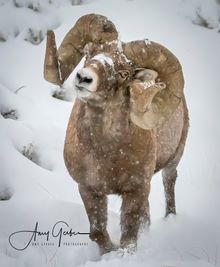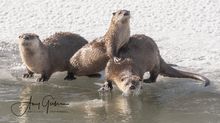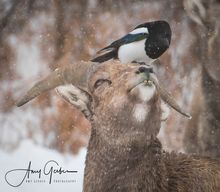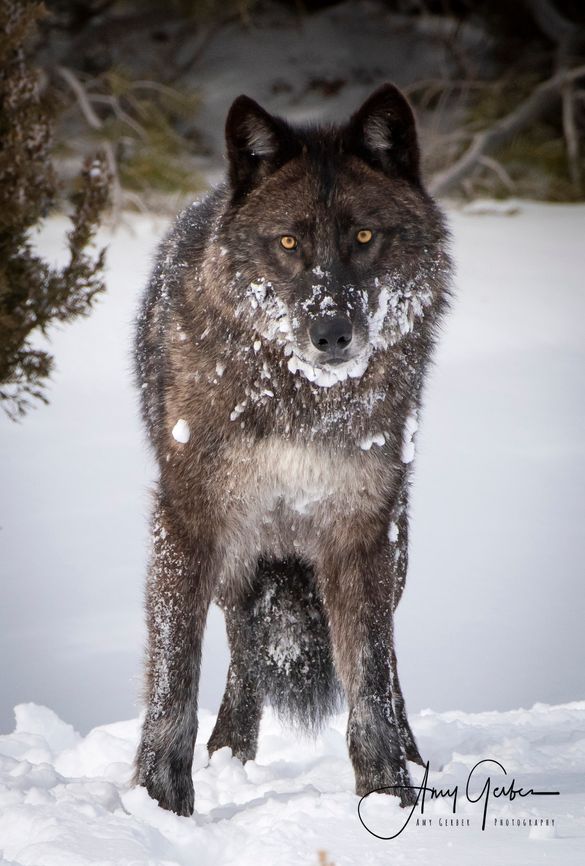 19 Dec 2024
19 Dec 2024
Tags: winter travel, CODY YELLOWSTONE, wildlife watching, bison, Wolves

CODY, Wyo., October 17, 2024 - Wildlife watching in Cody Yellowstone can be an enriching and memorable experience any time of the year, but in the winter, it is an especially compelling way to spend a day.
“During the cold-weather months, many species come down from the hills into the valleys and near the rivers, where they can be more readily seen, even from a safe distance,” said Ryan Hauck, executive director of Cody Yellowstone, the marketing arm for the region that includes the towns of Cody, Powell and Meeteetse, a large swath of the Shoshone National Forest and about half of Yellowstone National Park. “Animals generally move more slowly in the winter, too, so you can often watch them for extended periods as they forage for food and lumber through the snow.”
Cody Yellowstone's Buffalo Bill Scenic Byway leads to the East Gate of Yellowstone National Park. Although the gate is closed to road vehicles, Cody visitors can book a snowmobile tour into the park for a day trip or overnight adventure.
Tips for Winter-Season Wildlife Watching.
Be prepared. This is one of those times for visitors to adhere to the notion that there is no such thing as bad weather, only bad clothing. Downtown Cody is filled with shops that can help you with your preparations. For example, visitors can stock up on locally made jerky at Wyoming Buffalo Company and stop in at Sunlight Sports for any last-minute clothing items.
Gas up, check your tires and load your car with supplies. Drivers should make sure to have plenty of gas in their vehicles and tires in good condition for challenging winter driving. Conditions can change in seconds in Cody Yellowstone, so travelers should also stock plenty of food, drinks and warm layers.
Dress in layers and bring extra clothing. This is the time for vacationers to break out their best outdoor clothing like waterproof pants, hand-warmers and gaiters.
Know wildlife watching guidelines. The National Park Service recommends keeping at least 25 yards from most wildlife species and 100 yards from wolves. (Visitors won't see bears in the winter, as they typically head to their dens in November.) Travelers should give wildlife plenty of room to roam.
Protect photography equipment. Visitors planning to capture photos of wildlife should be prepared for the impact of extreme cold on equipment. Photographers should bring a selection of long- and wide-angle lenses, a tripod that will not freeze, extra batteries and insulated camera bags.
Where and When to Go.
The 52-mile drive between Cody and the East Gate to Yellowstone National Park is a wildlife-rich stretch with lots of places to pull off the road for better views. In the winter, it's common to see bighorn sheep climbing along the steep rock walls and for bison to lumber down the middle of the road in packs. Good viewing points are near Pahaska Tepee, Wapiti Valley and the Buffalo Bill Dam and near any river and stream. There are plenty of pull-offs on the byway.
The two best times of the day to see wildlife any time of the year are around sunrise and sunset.
12 Species to Watch.
- Bison. These majestic creatures forage for food beneath the snow, and they can sometimes be seen with large clumps of snow and ice dangling from their chin hair. These oddly shaped “snowball beards” dangle precariously from a bison's jaw until the weight forces them to break off, sometimes taking fur with them.
- Ermines. The fur of these tiny, short-tailed weasels transform from their brown-and-white summer coats to all-white fur for winter. Measuring up to 13 inches, these lively critters can leap repeatedly up to three times their length.
- Pygmy Owls. – Tiny but fierce, pygmy owls weigh only two ounces, but they can take on prey up to three times their size. They hunt in the daylight by sitting still in trees and surprising small songbirds.
- River Otters. This species is the most agile in the winter, and they can rapidly move through the ice and snow by hopping and sliding at speeds up to 15 miles per hour. They can also swim up to six miles per hour for up to three minutes at a time, using their long whiskers to help them find prey like fish and small mammals.
- Rocky Mountain Bighorn Sheep. The winter coats of bighorn sheep are generally lighter and much thicker in the winter than they are in the summer. The species is named for the large, curved horns of the male rams. Female ewes have horns too, but they are much smaller.
- Wolves. These are among the most adaptable winter wildlife species in the region because of their two unique layers of fur. Their outer-layer guard hairs are up to four inches in length, which protects wolves from the elements.
- Wild Mustangs. These magnificent wild horses freely roam the McCullough Peaks wilderness area the way they have ever since Buffalo Bill Cody settled in the region. The horses are believed to be descendants of the legendary showman's Wild West Show horses. Wild horses have a more compact and thicker build than domestic horses to help them survive in the wild.
- Pronghorns. Thanks to their huge windpipes and large heart, pronghorns are the fastest land mammals in North America, capable of springing 60 miles-per-hour. In the winter, these fascinating critters migrate to the northern part of the park. Herds are all-inclusive in the winter, with all ages and both genders roaming together during the coldest months. Come spring, the herds split into all-female herds, young bachelor male herds and older, solitary bucks.
- Raptors. Look to the skies to see bald and golden eagles that can often be viewed in trees and soaring above rivers and valleys. Lucky photographers might catch a shot of successful hunts as eagles catch fish and small animals in their sharp talons.
- Mountain Goats. It's a thrill to see this hard-to-spot species as they roam the cliffs and canyon walls high above the ground. A good place to look for them is Barronette Peak in the park near the northeast entrance.
- Elk. This is the most common wildlife species to spot in Cody Yellowstone.Herds can be spotted all winter throughout the Sunlight Basin and along the Northfork of the Shoshone River. Herds can often number 100 animals or more.
- Moose. These massive creatures can be spotted in marshy areas of meadows, lake shores and along rivers. Bull moose shed their antlers starting in late December, which helps them conserve energy to survive the harsh winters.


